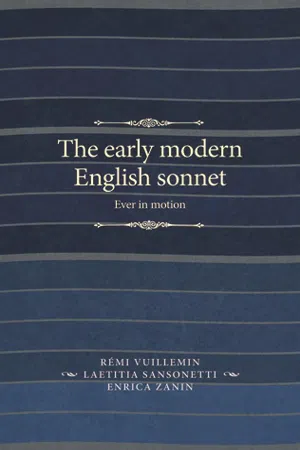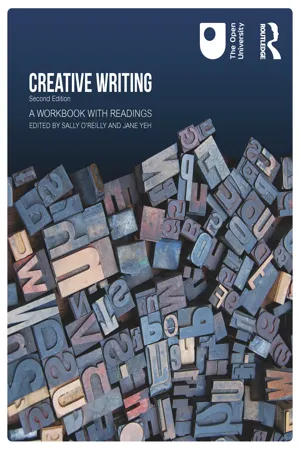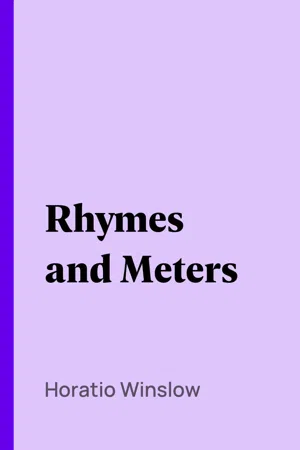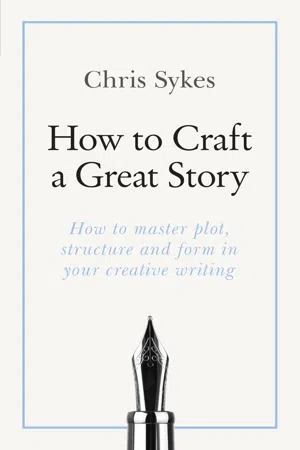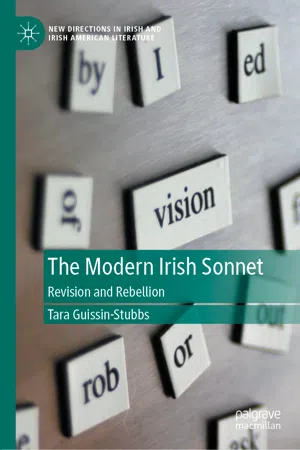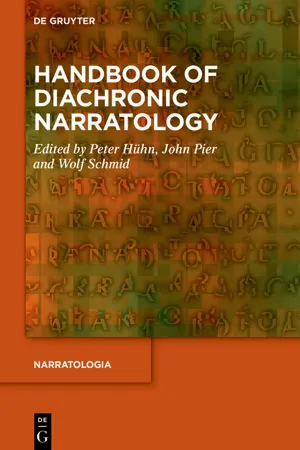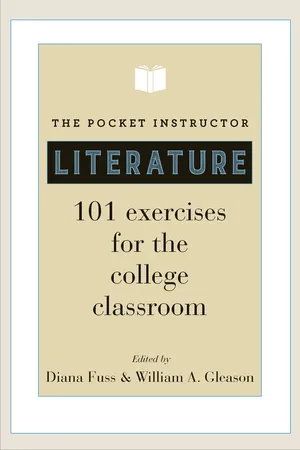Literature
Sonnet
A sonnet is a 14-line poem that follows a specific rhyme scheme and meter. It is traditionally written in iambic pentameter and often explores themes of love, beauty, and mortality. The two most common types of sonnets are the Italian or Petrarchan sonnet and the English or Shakespearean sonnet, each with its own distinct structure and rhyme scheme.
Written by Perlego with AI-assistance
9 Key excerpts on "Sonnet"
- eBook - ePub
The early modern English sonnet
Ever in motion
- Laetitia Sansonetti, Rémi Vuillemin, Enrica Zanin(Authors)
- 2020(Publication Date)
- Manchester University Press(Publisher)
Some think that all poems (being short) may be called Sonnets, as indeed it is a diminutive word derived of ‘suonare,’ but yet I can best bestow to call those Sonnets which are of fourteen lines, every line containing ten syllables. The first twelve do rhyme in staves of four lines by cross metre, and the last two, rhyming together, do conclude the whole. There are dizains and sixains, which are of ten lines and of six lines, commonly used by the French, which some English writers do also term by the name of Sonnets. 76 Gascoigne provides a very precise definition of the English Sonnet, but also registers the variety of the forms his fellow Englishmen call Sonnets: short poems in general, ‘dizains’ and ‘sixains’ in particular. The final remarks of Gascoigne’s short treatise indicate the context of use of each form. To him, ‘Sonnets serve well in matters of love as of discourse’. 77 The Sonnet is associated with love, but not restricted to it. It is difficult to see what exactly the term ‘discourse’ refers to here - eBook - ePub
Teaching Poetry
Reading and responding to poetry in the secondary classroom
- Amanda Naylor, Audrey Wood(Authors)
- 2012(Publication Date)
- Routledge(Publisher)
The Petrarchan Sonnet form moved from its origins in thirteenth-century Italy, through Spain and France, arriving in England with the work of Thomas Wyatt in the sixteenth century. Here the form became very fashionable for courtiers to express their love, and their ambition, and was used as a mode of expression that was not exclusively private, nor exactly public, between lover and the beloved. Generally they were exchanged within a small, élite group. Sonnets tended not to be written singly, but in sequences, expressing varying aspects of the poet’s experience and command of the form. Queen Elizabeth I exchanged Sonnets with Sir Walter Raleigh, and Sir Philip Sidney wrote a sequence that, although purporting to be by Astrophel about his love for Stella, is really only veiled flattery for the queen from her humble servant, himself.The derivation of the term ‘Sonnet’ is from the Italian Sonneto, or little song. The term stanza in Italian can be roughly translated as a ‘little room’, and the form is indeed like a little room, it is so concise and regulated. In John Donne’s lyric ‘The Good Morrow’, Donne puns on the ability of ‘one little room’, a stanza, being able to represent an expanse of experience, ‘an everywhere’. The Petrarchan Sonnet form has fourteen lines, and falls into two sections, the first of eight lines, the octave, and the second of six lines, the sestet. The two sections are divided by their rhyme schemes, the octave having ABBAABBA, only two rhymes for eight lines, and the sestet CDECDE, utilising three rhyming terms. The form naturally suggests that it will explore an idea from two particular angles, with a change in perspective occurring at the break between the two rhyming sections. The change in perspective is called a volta, or a turn, where the second part of the Sonnet responds to the first part. The Petrarchan Sonnet has become the most popular form in English poetry, as noted by Evans (1996) in his introduction to the New Cambridge edition of Shakespeare’s The Sonnets, ‘despite the fact that it is very much more difficult to deal with in English, the Petrarchan Sonnet has become the preferred form, used by Milton, Wordsworth, and many more recent poets’ (Evans 1996: 6).One modern poet who has used the Petrarchan Sonnet form to express a modern sentiment is Edna St Vincent Millay. Millay wrote at the beginning of the twentieth century, in America, expressing her views of female experience. The origin of Petrarchanism is in an expression of male desire and idealised versions of femininity; Millay reverses this, expressing a completely different vision of female sexuality, using the Petrarchan form. Consider her Sonnet. - eBook - ePub
Creative Writing
A Workbook with Readings
- Jane Yeh, Sally O'Reilly, Jane Yeh, Sally O'Reilly(Authors)
- 2022(Publication Date)
- Routledge(Publisher)
It can be challenging to fit your thoughts into rhyme and metre, but it can also lead you to discover phrases and thoughts you wouldn’t have otherwise. Writing in a form like the Sonnet enables you to become more attentive to the sound and rhythm of words: what poets call the music of language. This ability will serve you when writing free verse as well.Because of its compact size, authors have likened the Sonnet to a box, a cell or a ‘narrow room’ (Wordsworth, 2006 ). Yet poets continue to be drawn to it, and to infuse it with fresh purpose. Terrance Hayes’s American Sonnets for My Past and Future Assassin is an entire collection of Sonnets which explore ideas about Blackness, American history, politics and domestic life; in it, he calls the Sonnet form ‘part prison / Part panic closet, a little room in a house set aflame’ (Hayes, 2018 , p. 11).The option to write in rhyme and/or metre often emerges organically from your material. As you draft, you might notice an iambic rhythm to some of your sentences and decide to keep pursuing it, or feel that your subject matter would suit a certain form — or counter the expectations of that form in an interesting manner. As W.N. Herbert advises: ‘A poem is not a vessel into which we pour a previously prepared substance’ (2005a, p. 250). Torturing your language to fit a preconceived rhyme scheme will make your words sound stilted and awkward, whereas finding a form through the process of writing and revising will result in a better match between word and meaning.6 Syllabic verse
Unlike the type of metre I’ve been discussing, there’s a poetic form in which lines are simply measured by the number of syllables they contain. This is called syllabic verse. In syllabic verse, all you have to do is count the number of syllables in each line. Haiku is a form of syllabic verse: as you learned in Chapter 1 - eBook - ePub
Rhymes and Meters
A Practical Manual for Versifiers
- Horatio Winslow(Author)
- 2009(Publication Date)
- Perlego(Publisher)
It is the ambition of many a versifier to be known as a maker of Sonnets. Doubtless this love for the form is prompted not only by its possibilities but even more by its traditions. Shakespeare, Milton, Wordsworth and Rossetti, to mention only a few of the celebrated names, were masters of the Sonnet, though it must be said that the version used by the earlier English writers was not the one we know to-day. Shakespeare’s seventy-third Sonnet may serve as a fair example of the arrangement of the lines in the early Elizabethan period, though even in his day the present rhyming order was passing gradually into use.“That time of year thou may’st in me behold When yellow leaves or few or none do hang Upon the boughs which shake against the cold, Bare ruined choirs where late the sweet birds sang. In me thou see’st the twilight of such day As after sunset fadeth in the west, Which by and by black night doth take away, Death’s second self that seals up all in rest. In me thou see’st the glowing of such fire That on the ashes of his youth doth lie, As the death bed whereon it must expire, Consumed with that which it was nourished by. This thou perceivest which makes thy love more strong, To love that well which thou must leave ere long.”This fourteen lines, as an examination will discover, might be written in three four-line stanzas with an additional two lines as an epigrammatic envoy. In fact it can scarcely be called a Sonnet at all, and the last two lines come out with such force as to offend the ear accustomed to the more modern form. - eBook - ePub
How to Craft a Great Story
Teach Yourself Creating Perfect Plot and Structure
- Chris Sykes(Author)
- 2019(Publication Date)
- Teach Yourself(Publisher)
All right, this is poetry. Sestinas and Sonnets are old fashioned and not everybody wants to write poetry anyway. What relevance does all this have for story writing today? Is there a set of rules or a correct set of proportions for a story? Today, the answer to the question must be no and, yet, yes. In general there is as wide a variation in our understanding or agreement of what a short story is as to what makes a poem. As the world has changed so many of the traditionally accepted forms have collapsed.The world is changing fast and writing is changing with it. Almost no one today is certain what a poem is. Whereas a poem once might have been said to require a regular rhythm, an established and accepted form or to rhyme, now, none of those requirements are deemed necessary. And if someone dared to offer today a definition of what was required for a piece of writing to be a poem, another person, equally erudite, would pop up with an alternative.Consider what has happened to the Sonnet. Traditionally each of the English or Shakespearean, the Petrarchan, the Spenserian has slight variations of structure but the basic form remains intact; a 14-line poem which rhymes in a way particular to that version. There is also a structure of argument being set up in one section and resolved in another. But we now live in a world where poets write Sonnets that are any number of lines, as few as ten or twelve lines and without any rhyme at all. One wants to ask, what makes one poem a Sonnet as opposed to any other free verse poem? In our time a poem can be called a Sonnet because the poet has labelled it so, in much the same way that a piece of art is a piece of art because the artist names it. And what one person calls a free verse poem with no rhyme or discernible rhythm, someone else calls ‘chopped up prose’. It is the same with a story or a novel. They come in all shapes and sizes. - eBook - ePub
The Princeton Encyclopedia of Poetry and Poetics
Fourth Edition
- Stephen Cushman, Clare Cavanagh, Jahan Ramazani, Paul Rouzer, Stephen Cushman, Clare Cavanagh, Jahan Ramazani, Paul Rouzer, Stephen Cushman, Clare Cavanagh, Jahan Ramazani, Paul Rouzer(Authors)
- 2012(Publication Date)
- Princeton University Press(Publisher)
Baxter (New Zealand), Rafael Campo, Anne Carson (Canada), Tony Harrison (England), Marilyn Hacker, John Hollander, Edwin Morgan (Scotland), and Bernadette Mayer. In the 20th and early 21st cs., Sonnets have continued to broaden to include almost any subject and mood. Structurally, even within the traditional patterns, the Sonnet has reflected the principal influences evident in mod. poetry as a whole: *free-verse innovations have frequently led to less metronomic movement within the iambic norm; alternatives to exact rhymes have replenished the stock of rhyme pairs and have sophisticated acoustic relationships; and a more natural idiom has removed much of a burdensome artificiality. Such adaptability suggests continued interest in and use of the form. See ONEGIN STANZA, PETRARCHISM, QUATORZAIN. H. Welti, Gesch. des Sonettes in der deutschen Dichtung (1884); Schipper, 2.835 ff; L. Biadene, Morfologia del sonetto nei secoli XIII e XIV (1889); Sonnets on the Sonnet, ed. M. Russell (1898); M. Jasinski, Histoire du Sonnet en France (1903); L. T. Weeks, “The Order of Rimes of the English Sonnet,” MLN 25 (1910)—data; Thieme, 381 ff—lists 17 Fr. works, 1548–1903; F. Villey, “Marot et le premier Sonnet français,” Revue d’Histoire Littéraire de la France 20 (1920); R. D. Havens, The Influence of Milton on English Poetry (1922)—surveys 18th- and 19th-c. Eng. Sonnets; W. L. Bullock, “The Genesis of the English Sonnet Form,” PMLA 38 (1923); L. G. Sterner, The Sonnet in American Literature (1930); L. Zillman, John Keats and the Sonnet Tradition (1939); W. Mönch, Das Sonett (1955)—most comprehensive study to date, with extended bibl.; E. Rivers, “Certain Formal Characteristics of the Primitive Love Sonnet,” Speculum 33 (1958); E. H. Wilkins, The Invention of the Sonnet and Other Studies in Italian Literature (1959); E. Núñez Mata, Historia y origen del soneto (1967); S. Booth, An Essay on Shakespeare’s Sonnets (1969); Das deutsche Sonett, ed. J. U. Fechner (1969); J - eBook - ePub
The Modern Irish Sonnet
Revision and Rebellion
- Tara Guissin-Stubbs(Author)
- 2020(Publication Date)
- Palgrave Macmillan(Publisher)
Sonnet which is the legitimate form, for it alone recognizes that peculiar imbalance of parts which is its salient characteristic’; however, the English Sonnet ‘does something rather different with the form which is not quite as interesting or as subtle’, while ‘[c]ertain other freak varieties […] pay tribute only to the powerful echoes of the form that perversions of it essentially deny’.According to Fuller’s definition of the Sonnet, most of the poems discussed in the present study would likely be dismissed as examples of what he terms either ‘strokes of brilliant licence’ or ‘the drudgery of persistent misunderstanding’.3 Fuller also refers the reader to Ezra Pound who, writing in an essay first published in 1934, claims that the Sonnet ‘marks an ending or at least a decline of metric invention’, and ‘the beginning of the divorce of words and music’; in Pound’s mind, ‘by A.D. 1290 the Sonnet is already ceasing to be lyric, it is already the epistle without a tune’.4 Yet it is the written features of such an ‘epistle’ that continue to hold an appeal, both in relation and in contradistinction to its oral potential. Paul Oppenheimer suggests that the Sonnet was not intended to be spoken at all, claiming that ‘it is the first lyric form since the fall of the Roman Empire intended for silent reading’ and is ‘the first lyric of self-consciousness, or of the self in conflict’.5 We might also think of Helen Vendler’s response to Yeats’s use of the Sonnet, where she suggests that what the form ‘meant to Yeats , historically speaking, was verse consciously aware of itself as written not oral’; this, when combined with its associations with the English lyric, ‘compelled from Yeats both his literary allegiance and his nationalist disobedience’.6 To read the Sonnet form as Pound - eBook - ePub
- Peter Hühn, John Pier, Wolf Schmid, Peter Hühn, John Pier, Wolf Schmid, Peter Hühn, John Pier, Wolf Schmid(Authors)
- 2023(Publication Date)
- De Gruyter(Publisher)
Moreover, the speaker’s utterance presents a momentary state of affairs, frequently addressed to an addressee and performed at the moment of speaking. The focus on the present moment is assisted by the specific form of the Sonnet, the restriction to fourteen lines and the argumentative turn at the volta (after line 8 in the Petrarchan, additionally after line 12 in the Shakespearean form). The narrative organization of the Sonnet sequence, i.e., the implied changes of state underlying the succession of the Sonnets, can vary in degree (between stronger and weaker narrative lines; consider the notion of “weak narrativity” in McHale 2001) or in content (between situational and mental changes). Prototypically, the speaker, narrator, and protagonist are one. There may be one or more plotlines driven by one or more dynamic motives resulting in a sequence of changes of state, possibly with a decisive eventful turn, an event, presented by the narrator from one specific perspective. Narrative development, or change of state, usually occurs between Sonnets but can also be indicated within individual Sonnets. Historically, the Sonnet sequence is closely associated with one specific thematic frame: a male lover expressing desire for his beloved and ultimate denial of fulfillment, in line with the medieval Christian doctrine of sexual abnegation. 2 Early Modern Age: Sixteenth and Seventeenth Centuries The development of the Sonnet sequence in England from the sixteenth and seventeenth centuries to the nineteenth century cannot be understood without a reference to the origins of this poetic subgenre in medieval Italy, particularly to Dante in the thirteenth and Petrarch in the fourteenth century. Especially Petrarch’s Canzoniere served – directly or indirectly – as a model for subsequent Sonnet sequences, with respect both to form and subject matter. 2.1 Francesco Petrarch, Canzoniere (ca - eBook - ePub
Skills for Scholars
101 Exercises for the College Classroom
- Diana Fuss, William A. Gleason, Diana Fuss, William A. Gleason(Authors)
- 2015(Publication Date)
- Princeton University Press(Publisher)
Choose a selection of Sonnets distinguished by their different rhyme schemes: the Petrarchan Sonnet, the Shakespearean Sonnet, the Spenserian Sonnet, and the terza rima Sonnet. Be sure to select your Sonnets from a broad spectrum of literary periods. Some good candidates include Edmund Spenser’s “What guile is this, that those her golden tresses,” William Shakespeare’s “From fairest creatures we desire increase,” John Milton’s “When I consider how my light is spent,” Percy Bysshe Shelley’s “O Wild West Wind, thou breath of Autumn’s being,” and Edna St. Vincent Millay’s “Only until this cigarette is ended.”Begin by providing a “quick and easy” guide to the more common Sonnet patterns and their defining rhyme schemes. You can project the guide on a screen or write the patterns on a board, but providing a simple handout like this one—which should also include the Sonnets you have chosen—works best:A Quick Guide to Identifying (Some) Sonnet PatternsPetrarchan Sonnet:abba-abba-cde-cde Alternate sestet rhymes: cdc-cdc, or cde-dce.Terza Rima Sonnet:aba-bcb-cdc-ded-ee Often has a rhyming couplet at the end.Shakespearean Sonnet:abab-cdcd-efef-gg Usually 14 lines, iambic pentameter.Spenserian Sonnet:abab-bcbc-cdcd-eeTake some time briefly to explain how rhyme controls form. In the Petrarchan Sonnet, the octave’s two quatrains present and develop the Sonnet’s general themes, while the sestet’s two tercets reflect upon these themes. The Shakespearean Sonnet will permit a break between octave and sestet but is composed of three quatrains and a closing couplet. The Spenserian Sonnet deploys rhyme to link its quatrains more tightly, while the terza rima Sonnet abandons quatrains altogether and uses tercets with interlocking rhymes to create even greater continuity. Explain to the students how rhyme schemes help to establish and distinguish different types of Sonnets.Then create groups of three to four students and, according to your needs, assign each group either the same Sonnet or different ones from the handout. Explain that students have twenty minutes to discuss the poem and decide which type of Sonnet it might be. Their work does not end there, however. Tell them in advance that each group will report back to the class on not just the Sonnet’s form and rhyme scheme but on the poem’s other formal properties, such as diction, figurative language, and tone. Let them know they will have roughly five minutes for their presentation, in which they will read their poem aloud to the class, identify the Sonnet pattern, show where and why the Sonnet may break that pattern or “bend the rules,” and note anything else about the poem’s language, tone, structure, or meaning that captures their attention. To help them work efficiently and stay on task, provide them with some concise sample questions (these may also be included on the handout).
Index pages curate the most relevant extracts from our library of academic textbooks. They’ve been created using an in-house natural language model (NLM), each adding context and meaning to key research topics.
Explore more topic indexes
Explore more topic indexes
1 of 6
Explore more topic indexes
1 of 4
